More than one million people have played Elite: Dangerous at one point or another. Despite this achievement that surpasses any space sim in history, very few people have actually seen or heard of the best that the game has to offer.
Like other space sims, Elite: Dangerous is challenging and often times cumbersome. Most of its content is never explained in-game, and instead a large majority of veterans gained their knowledge through experimentation and/or by posting questions on places like Reddit. But not everyone puts in the time nor effort to experience the game's potential, and as such their understanding of what it offers is limited to the small gallery of options available from the start.
At this point I have 53 confirmed hours played in Elite: Dangerous using virtual reality, which is well below what most of the active community has accumulated, but a large enough number that I feel like I've become acquainted with the game.
There are a lot of ways to spend time and progress in Elite: Dangerous, one of the most coveted of which is exploration. Although I had succeeded at things like bounty hunting, trading, and missions during my first 53 hours, I had no exploration experience.
I recently felt inspired to change that with the arrival of the v2.3 patch. So, last week I packed my bags, threw on my Oculus Rift, and set off into outer space, unknowing of what awaited in the cosmos.
Travel Preparations
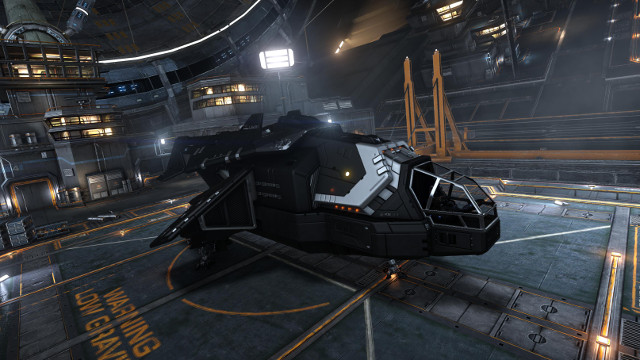
My journey began with investing most of my savings into a ship and outfitting. After arriving at a space hub with large quantity of vehicles in-stock, I put down 564,000 credits on a Diamondback Scout. This particular ship excels at exploration with a default jump range of 11.35 light years, high maneuverability, and four utility mounts to equip with essentials like the fuel scoop.
I would spend almost the entirety of the rest of my savings on equipment. I upgraded virtually every facet of the ship, including its power distributor, thrusters, and I even put down more than one million credits on an advanced discovery scanner, allowing me to acquire data from scanning star systems which I could then sell for income.
As an enthusiast of astronomy, opening up the galaxy map is always delightful. Elite: Dangerous' world replicates that of our own Milky Way with incredible accuracy; you can visit Earth if you want to, Alpha Centauri A, Polaris, among other notable stars known by even the most inexperienced space enthusiast. In-fact, there are over 100 billion star systems to visit in the game, around 160,000 of which are directly inspired by real life. If you're the first person to visit one you can forever lay claim to it, etching your name onto its profile for as long as Elite: Dangerous has online game servers.
After some deep thought, I soon found myself dead-set on visiting a nebula. I had heard that the hot, colorful gases of these giant wonders are a sight to behold, and wanted to see one for myself.
After a few minutes of staring at the galaxy map, I set my trajectory for a class A star within the Lupus Dark Region B.
The Journey Begins
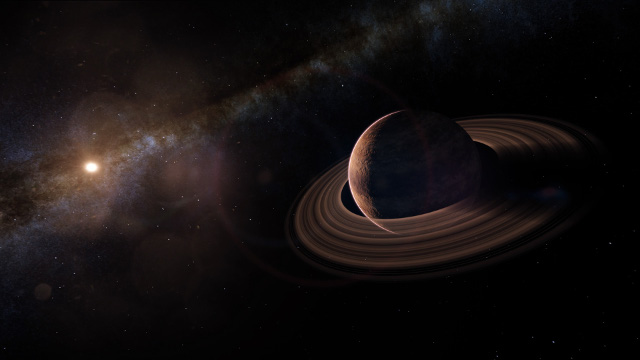
Within 20 minutes I had crossed the boundary of inhabited space, an incredibly small portion of the galaxy that had been populated by human beings. As I would come to know, this would mean that places to dock for fuel and goods would leave with me. I was out in the wild blue yonder all on my own.
Travel takes an incredibly long time in Elite: Dangerous. I outfitted my Diamondback Scout with some of the best equipment available specialized in long distance hyperspace travel. Even then, my maximum jump distance was only 17.1 light years. Although that's far enough to travel roughly four times the distance of the nearest star to our Solar System, the Milky Way is 100,000 light years in diameter.
In my case, I needed to travel 464 light years before I would reach Lupus Dark Region B. That's over 27 hyperspace jumps, each of which require manual jump input; there is no autopilot available like in EVE Online.
Also Read: The Famous Elite: Dangerous Alien Encounter
The further I ventured from inhabited space, the more I was amazed by the scope of the game. I could visibly see the variance in each star and its systems as I hopped from system to system. Some systems had two stars in a tidal lock (bound to each other like the Moon to the Earth), and others had a plethora of gas giants with rings circling them. Some systems didn't even have planets, which made me feel almost like the star was lonely, floating out in space for eternity—or at least until Andromeda collides with our Milky Way in four billion years.
This variation is a great thing for making money. Since I had a discovery scanner equipped, I was able to scan systems for data. Rarer objects are worth a lot more money when scanned, so in cases where monotony began to set in, I was entertained at the thought of visiting distinct locations worth tens of thousands of credits. This is something I would do with all of the more than 60 systems I would visit, providing a monetary benefit to my time investment.
Beautiful Sights
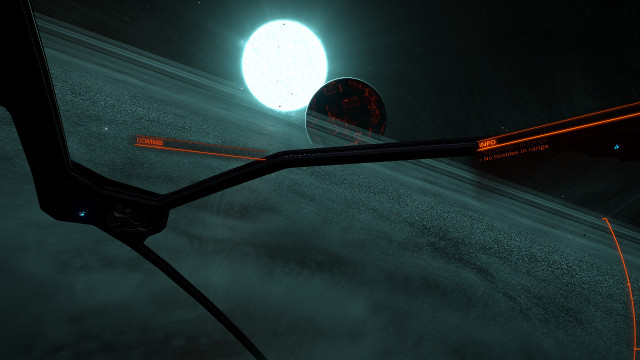
I made an effort to veer off the optimized path and visit some sights along the way. My first stop was a neutron star, which are some of the most dense and powerful stellar objects in existence. These are formed when stars with 10 to 29 solar masses have their core collapse, melting their protons and electrons resulting in an incredibly dense neutron-dominated mass. These are so dense that a portion of one the size of a city equates to roughly 1.4 the mass of the sun. Or put more simply, one teaspoon of neutron star material has 900 times the mass of the Great Pyramid of Giza.
Neutron stars are small in comparison to the average star, but remarkably bright. While I haven't seen one in real life using a telescope, I stared at one through my Oculus Rift and was nearly blinded; its ultra violet+ light produced a blueish white hue that dazzled before its dark background. It was almost like seeing a massive energy-laden diamond in outer space.
As beautiful as it was, I was more impressed by how Elite: Dangerous maps each star. Instead of using a static sky box in the background, all stars within your proximity are visible precisely where they are located in relation to your current location. As I flowed from system to system, I could see the location of stars shift, and occasionally caught a glimpse of stars with incredible colors like dark red class M stars and even blue type O stars (which have an effective temperature of over 30,000 Kelvin).
At one point during my journey I hoped I would cross paths with a black hole, but a part of me was terrified by what that would be like. I think I've watched too many Neil deGrasse Tyson documentaries at this point to not respect the power of black holes. The truth is that most of the black holes known in our galaxy are near the galactic core, and although I was traveling for multiple hours, I wasn't even coming close to the proximity of that location. Maybe someday.
Crisis Scenario
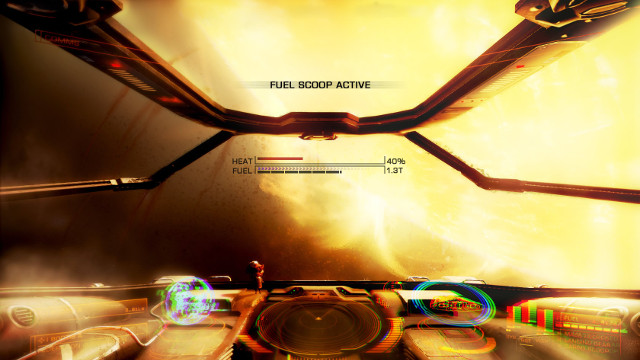
Long distance travel in Elite: Dangerous does require some work beyond hyperspace travel. Fuel is consumed during each jump, to a point where I had to fill up every 5 to 10 minutes. With no space ports nearby, I had to rely on my fuel scoop. This entailed flying around stars while managing my velocity, trajectory, and heat; if I got too close, I would be ripped out of supercruise and be exposed to the incredible energy of the star (a risky proposition when near higher temperature stars). If I was too far, my fuel gained per minute wasn't optimized so I was effectively adding transit time to my travels.
For the exploration fiend of Elite: Dangerous, heat is a primary concern. It is technically possible to be interdicted by another ship and therefore be open to the possibility of a battle related death, but that's incredibly rare within the context of deep space travel. Attentively refueling during mental fatigue is the most common cause of death among explorers.
I made the mistake of getting too close to a star on several occasions, losing a small portion of my hull in the process. In one particular case I came too close to a class B star (11,000 to 25,000 kelvin temperature) and was stopped dead in my tracks with a 30 second frame shift drive cooldown. Seconds felt like minutes as I scrambled to manage the situation. Thermals were rising at a rate I had never seen before. A fire burst from my control panel, and the subsequent smoke fogged my glass shielding.
Also Read: Elite: Dangerous Is The Game No Man's Sky Aspires To Be
As my hull took damage I was thankfully quick to turn off unnecessary components. These included my shields (useless against radiation), weapons, and life support, each of which produce heat of their own, contributing to the problems I was experiencing. My heart raced as I flipped the switches, and aimed my trajectory for the escape vector. It was at this moment that I felt like an Apollo astronaut; nobody was there to save me but myself, and I was in a dire situation that could result in (virtual) death.
By the time I was able to enter supercruise and escape the wrath of the star's energy, I had lost more than 30% of my hull. This meant that I was more susceptible to further damage during my travels, and therefore needed to be far more careful with future fuel scoops. Nonetheless, I made the decision to press on after re-initiating my components.
The Nebula
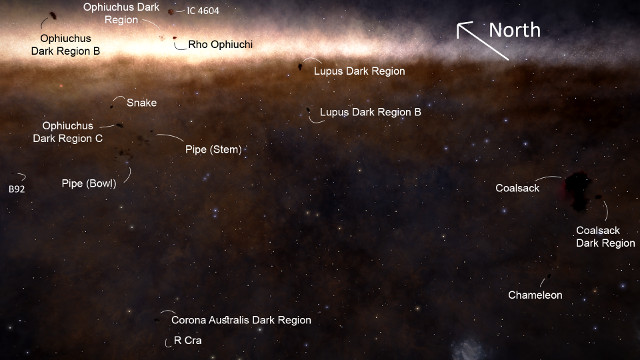
I was soon rewarded with the best sight of my journey. As I approached Lupus Dark Region B, I could see the dark, blood red nebula drape the sky in the distance. It became bigger as I approached, eventually taking up nearly half of the visible sky.
I made an effort to land on a planet at my destination. It was a red, rocky planet not too dissimilar from Mars, devoid of vegetation or water. Landing was quite the experience, as there was a discomforting feeling I had when touching down on an alien world, unknowing of how it would handle my reception. Although it was unfamiliar to me, it paid no mind in me sharing a few minutes of coexistence.
I ended up drive around in my SRV buggy doing power slides while gathering materials and admiring the incredible beauty that surrounded me. Although the system map stated that someone had been here before, the dirt that I drove on was pristine. No other player had ever landed on the planet at the location where I visited, and that's amazing when you think about it.
It was an incredibly odd feeling being in such a remote location. With billions of stars, there was an infinitesimal chance that any of the thousand of players online were anywhere near me. If I needed help, I was on my own, and the sight I was seeing was my own.
I was glad that I set my destination for a nebula, as it was prettier than I had imagined. This alien world was one vastly different than my home in the Orion Arm.
Coming Home

At this point I had spent more than four hours traveling through the cosmos. Part of me missed being around fellow human beings, having access to a dock and repairs. With that, I decided to head home.
On my way back I took an alternate route, visiting some new stars and scanning them in the process. Though, there was a sense of winding down that came with my final hour of travel. I was no longer heading into a place far beyond, and instead was putting in time to travel to a place I had been before. I'd be lying if I said I didn't consider the thought of self-destruction to instantly travel back to inhabited space, but I knew that would be costly.
I eventually arrived back at LHS 3447, and docked my wounded ship at the Dalton Gateway. My first order of business was making sure I got credit for my exploration scans. I was happy to learn that I earned 1.1 million credits for my efforts, much of which came from my scans of celestial bodies like the neutron star.
As I logged out, I considered that at some point I should travel to the galactic core where star density is incredible, the stakes are even higher , and the sights are so far beyond anything I'd seen before that many players consider it worth the dozens of hours of transit. But for now I was happy with being 1.1 million credits richer, and knowing that I had embraced exploration in Elite: Dangerous for my first time. I think I might be hooked.
Before I go, here are a few quick tips for you if you plan to go on an adventure of your own:
- Bring the best discovery scanner you can afford.
- Earthlike planets are highly valuable for scans. Skip metal planets and those without an atmosphere.
- Gas giants tend to be too far from the star to be worth scanning due to the requirements for travel time.
- Lupus Dark Region is roughly 1 hour and 45 minutes out from the center of inhabited space.
- Don't forget to bring a fuel scoop and equip your ship with a heat shield.
- Learn how to hyperspace jump as quickly as possible to reduce transit time.
- Be careful if you go AFK as you could be interdicted.
- Maximum jump distance is very important. Invest in components to improve this value as high as possible.
- If you've been considering a VR headset and have money for one, it's highly recommended as it greatly improves immersion.
Godspeed.







